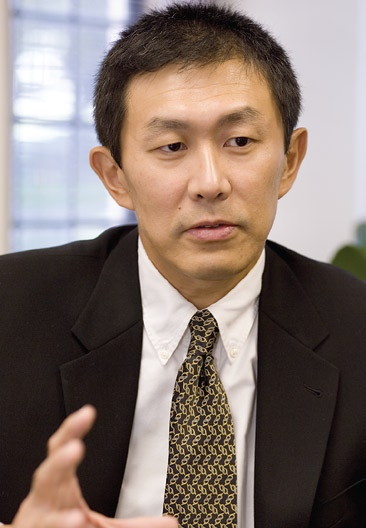It wasn’t that long ago that the capabilities of smart phones and other digital gadgets seemed dizzying. Now, we hardly think twice about the comprehensive technical infrastructure that supports them, or about the wireless, portable world of personalized information and entertainment that is forever at our fingertips.
What if we were to apply a similar model to rethink today’s diagnostic, therapeutic and drug delivery technologies? The potential for dramatic improvement in the accessibility and cost of medical care cannot be overstated – nor can the urgency of that need.
Think of advances in biocompatible materials, optics, nanotechnologies, and biosensors and electronics, and imagine integrating these with state-of-the-art communication devices and imaging and data-management systems. This could make it possible to complement or even replace massive, stationary, hospital-bound equipment with small, portable and even self-administered devices. Currently, however, no major U.S. biomedical research program offers this integrated biomedical and systems engineering approach to research in affordable and accessible medical technologies.
Meanwhile, a major demographic shift – some have called it an “agequake” – looms as the baby boomer generation begins to retire. Over the next two decades, this phenomenon will overwhelm our hospitals and clinics. From an engineer’s perspective, it’s not a matter of politics; it’s a matter of capacity and efficiency. Such growing demand makes a medical-technology framework that provides accessibility and affordability not only desirable, but altogether necessary.
Engineers do not deliver medicine, but working with our colleagues in the medical sciences, we can make medicine more accessible and affordable. This is the focus of Lehigh’s Biotech Cluster and its emerging partnership with the Mayo Clinic, as described in our cover story on page 10. The multidisciplinary initiative draws upon distinctive and complementary research expertise at Lehigh and Mayo. It combines strengths in materials science, nanotechnology, optical technologies and systems engineering with world-class biomedical research and clinical expertise to create a unique blend of research competence that neither institution could deliver on its own. Its goal is to develop systems architecture, integrated devices and new materials that will have a translational impact on therapies, diagnostics and drug-delivery technologies.
This issue of Resolve focuses on Lehigh’s research and innovation in biotechnology and our commitment to an area where engineering, life science, medical science and healthcare intersect. The Lehigh Valley is emerging as a hotbed of biomedical device development, located at the geographical center of five major biotechnology hubs in the U.S. (Boston, Baltimore/D.C., Philadelphia, New York and New Jersey). Our goal is to leverage our core strengths in engineering through partnerships, innovative programs and unique facilities that will propel us into this field’s intellectual center.
I hope you enjoy this issue of Resolve. Please drop me a note to share your thoughts and comments.
S. David Wu, Dean and Iacocca Professor
P.C. Rossin College of Engineering and Applied Science

